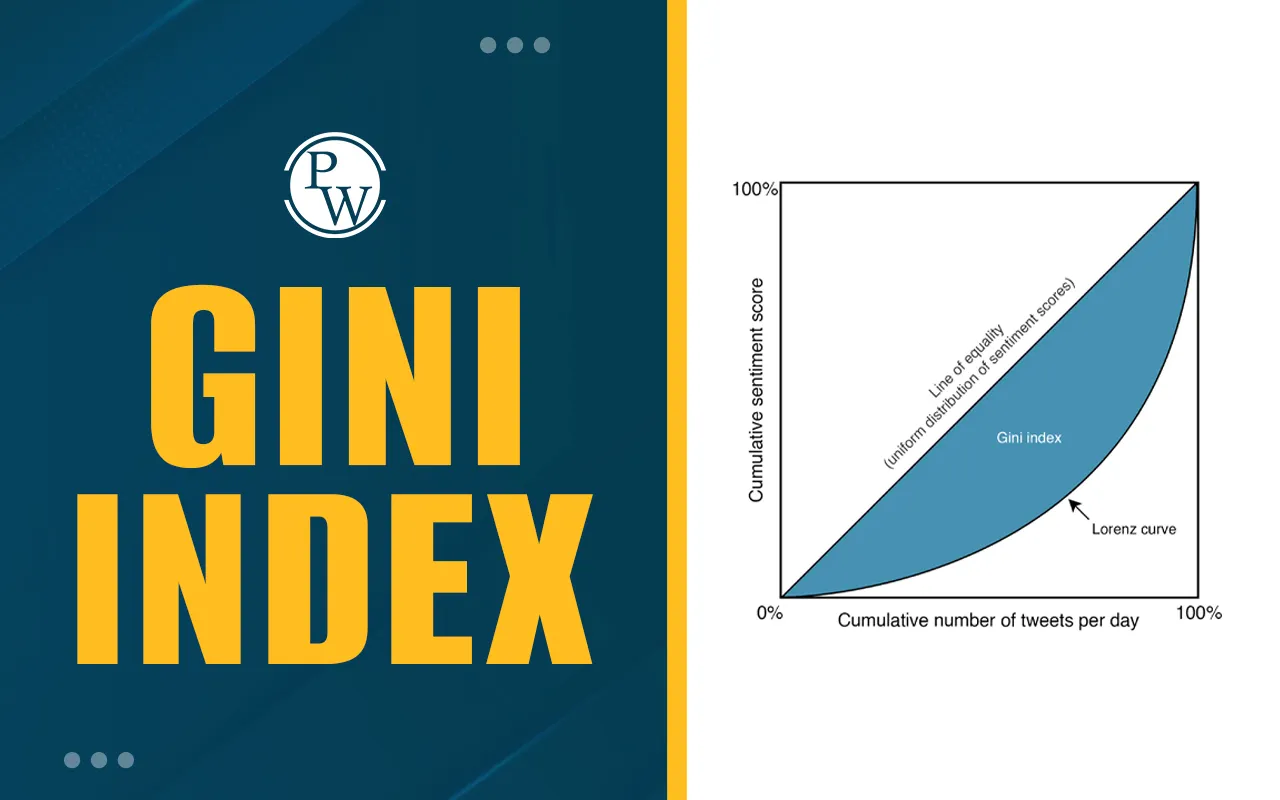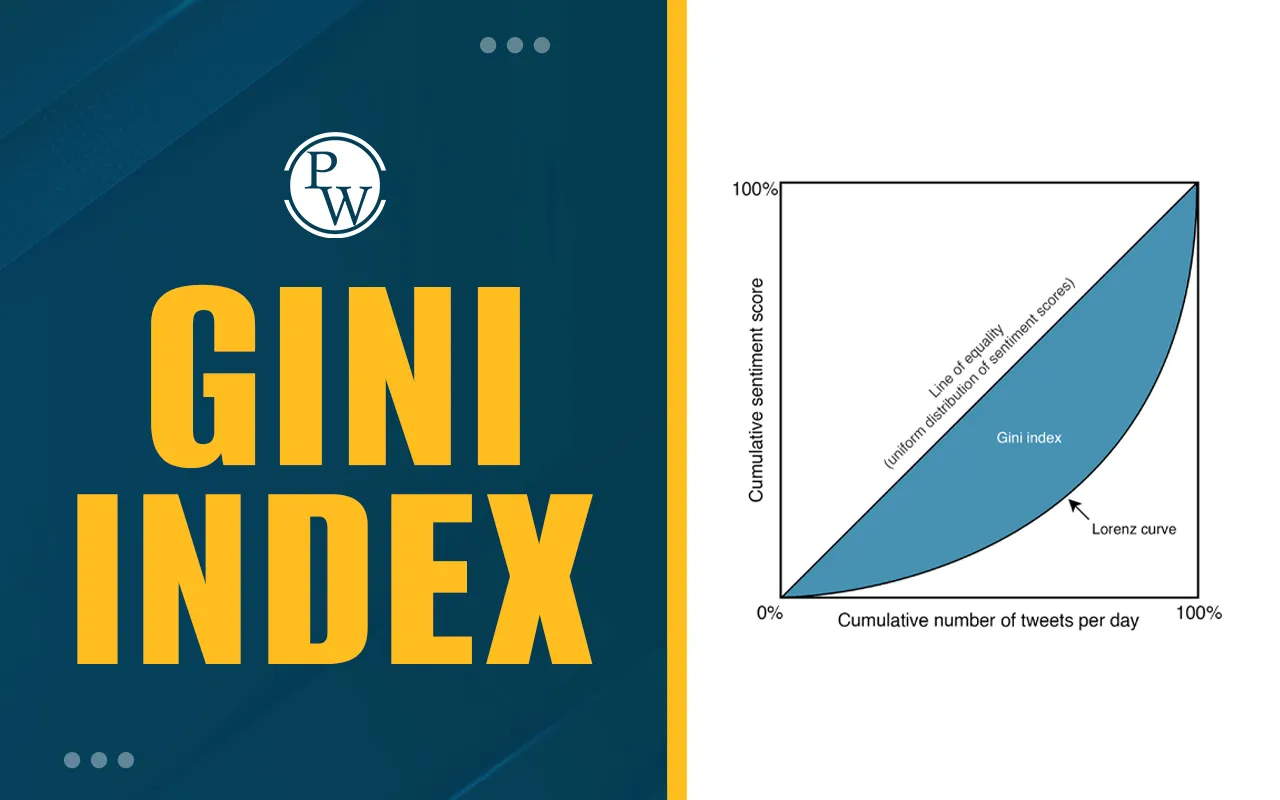

What is the Gini Index: The Gini Index is a widely used statistical measure that helps in assessing income inequality within a population. It provides valuable insights into how wealth is distributed among individuals in a country or region. By analyzing the Gini Index, economists and policymakers can understand economic disparities and design strategies to promote financial inclusion.
What is the Gini Index?
The Gini Index, also known as the Gini coefficient, is a numerical representation of income distribution. It ranges between 0 and 1, where 0 represents perfect equality (everyone has the same income) and 1 signifies absolute inequality (one person holds all the wealth while others have none). Some interpretations scale it from 0 to 100, but the concept remains the same.
This metric is essential in evaluating economic inequality across different countries. A lower Gini Index indicates a more balanced income distribution, whereas a higher value suggests greater inequality.
How is the Gini Index Calculated?
The Gini Index is derived from the Lorenz curve, which graphically represents income distribution. The calculation involves:
Plotting the Lorenz Curve: The x-axis represents the cumulative percentage of the population, and the y-axis represents cumulative income.
Comparing with the Line of Equality: A 45-degree diagonal line represents perfect equality.
Measuring the Area Difference: The Gini Index is calculated by comparing the area between the Lorenz curve and the equality line.
Using the Formula: Mathematically, the Gini Index is given by:
G = A / (A + B)
Where A is the area between the equality line and the Lorenz curve, and B is the area under the Lorenz curve.
Importance of the Gini Index
The Gini Index plays a crucial role in economic analysis by helping governments and organizations identify disparities in wealth distribution. Some key reasons why it is significant include:
Policy Formulation: Governments use the Gini Index to frame policies aimed at reducing income inequality.
Global Comparisons: The Gini Index allows comparisons between countries to assess economic fairness.
Economic Stability: High inequality, indicated by a high Gini Index, can lead to social unrest and slower economic growth.
Poverty Assessment: The metric helps in determining poverty levels and the effectiveness of welfare programs.
Gini Index by Country
Countries around the world display different Gini Index values based on their income distribution. Some countries with low inequality have a Gini Index below 30, while those with significant inequality have values above 40.
For example:
- Nordic countries like Sweden and Norway have a low Gini Index, reflecting equitable wealth distribution.
- Developing nations often have higher Gini Index values, indicating disparities in income and wealth.
- The United States has a moderately high Gini Index, signifying income gaps despite its economic strength.
Factors Affecting the Gini Index
Several factors influence the Gini Index, including:
Education Levels: Higher education reduces income gaps, leading to a lower Gini Index.
Economic Policies: Progressive taxation and social welfare programs help in balancing income distribution.
Employment Opportunities: High unemployment rates increase income inequality.
Technological Advancements: Automation can widen income gaps by reducing low-skilled job opportunities.
Globalization: Uneven economic benefits from globalization can contribute to a higher Gini Index.
How to Reduce a High Gini Index?
A high Gini Index indicates income inequality, and reducing it requires strategic policies such as:
Progressive Taxation: Implementing higher taxes on the wealthy and providing tax relief for lower-income groups.
Better Access to Education: Ensuring quality education for all reduces income disparities over time.
Minimum Wage Regulations: Raising the minimum wage can help in balancing income levels.
Social Welfare Programs: Strengthening welfare schemes like healthcare, pensions, and unemployment benefits.
Employment Growth: Creating more job opportunities through industrial expansion and skill development.
Limitations of the Gini Index
While the Gini Index is an effective tool for measuring income inequality, it has certain limitations:
Does Not Reflect Wealth Distribution: It only considers income, not assets like real estate or stocks.
Ignores Regional Disparities: The national Gini Index might overlook inequalities within different regions of a country.
Cannot Differentiate Between Income Sources: The index does not distinguish between earned income and inherited wealth.
Sensitive to Data Accuracy: The accuracy of the Gini Index depends on reliable income data.
The Gini Index is a crucial indicator for understanding income inequality. It provides valuable insights into how wealth is distributed and helps policymakers take informed decisions to bridge economic gaps. By addressing the factors that contribute to high inequality, societies can work toward a more balanced and inclusive economic structure. Regular analysis of the Gini Index can guide countries in achieving sustainable economic growth with reduced disparities.
For businesses, economists, and policymakers, the Gini Index remains a fundamental metric in shaping financial strategies and ensuring economic stability worldwide.
Join PW Commerce Online Course and unlock your potential with quality education and dedicated learning support.
Gini Index FAQ
What does the Gini Index measure?
How is the Gini Index different from the Lorenz Curve?
Why is a high Gini Index a concern?













